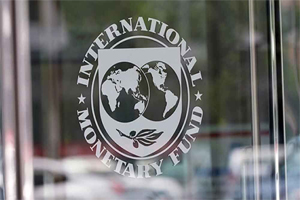
IMF to consider $1.4 billion Pakistan grant on April 16
The International Monetary Fund (IMF) has called its executive board meeting on April 16 to consider an extra loan of $1.4 billion for Pakistan to boost the country’s foreign exchange reserves and extend budgetary support in the wake of the economic slowdown due to the corona virus pandemic. The government had requested the IMF last month for a low-cost, fast-disbursing loan under the fund’s Rapid Financing Instrument (RFI) to deal with the adverse economic impact of COVID-19. “We have been working with the Pakistani authorities since the request was placed. This $1.4 billion disbursement is scheduled to happen next week,” IMF Resident Representative in Pakistan Teresa Daban Sanchez said. The RFI is used to provide financial assistance to IMF member countries facing an urgent balance of payments need without requiring them to put a full-fledged programme in place. Sanchez said the IMF was working with the Ministry of Finance to make sure that Pakistan had “enough resources to navigate through this difficult time”. The $1.4 billion loan to Pakistan is additional to the country’s $6 billion bailout package that it signed with the IMF in July last year to stave off a balance of payments crisis. “Pakistani authorities remain committed to the policies and reforms outlined under the EFF-supported programmed,” the IMF representative said. Pakistan had already announced Rs1.2 trillion fiscal stimulus package to offset the adverse impacts of the COVID-19 pandemic on the country’s fragile economy. The country also approached multilateral donors for additional funds to fight the corona virus pandemic and its economic implications. The World Bank had approved $1 billion and the Asian Development Bank $1.5 billion for Pakistan to keep its economy afloat.
|
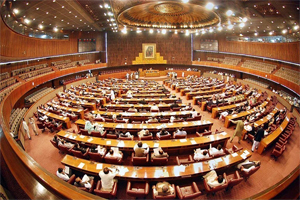
Govt to reopen low-risk industries across the country
The parliamentary committee on Covid-19 was informed that the government was reopening low-risk industries to ensure the supply of essential commodities amid the corona virus outbreak in the country. It was also maintained that the economic and social impact of the corona virus outbreak in the country was a greater crisis than the pandemic itself. The committee met under the chair of National Assembly Speaker. The meeting was attended by federal ministers and lawmakers from all political parties in parliament. Adviser to the PM on Finance told the participants that the viral outbreak had affected both exports and the flow of remittances. He added that the investment portfolio had reduced by $1.4 billion. Furthermore, the Pakistan Stock Market has fallen by 21% since the mid of February and the value of the rupee decreased by 3%. “The GDP rate in the fiscal year 2020-21 will remain low because of the setback caused by the pandemic,” Finance Advisor explained.
|

IT emerging opportunities
The corona virus has caused major fiscal damage to the economy worldwide, reaching an unprecedented $15 trillion so far. The blessing in disguise is that the entire workforce is now idle but readily available, at a time where governments are desperate for diversified income generation streams. For Pakistan, in the era of hi-tech mechanisation, this skilled labour can become not only the real Relief Catalyst but also national modernisation drivers. Surprisingly, Pakistan has achieved some noteworthy markers in its technology journey, including 39% growth (third highest) in IT software and service development since 2004 and an estimated market value of over $2 billion in 2019. In telecoms, Pakistan has reached 33% smart phone market penetration with 17% internet usage since 2014. The average internet speed is 24 Mbps (62nd fastest), with 24% of the population as subscribers. IT export from Pakistan is projected at over $6 billion for 2020, whether this can be achieved now is a big question mark. Even so, several multinational companies such as Oracle, Microsoft, Russian IT Export (RITE), Huawei, Cisco and IBM have established local offices in the country, given the IT demand of the state and the commercial potential that comes along with it. Now it is question of capitalizing the opportunity, how smartly and swiftly
|
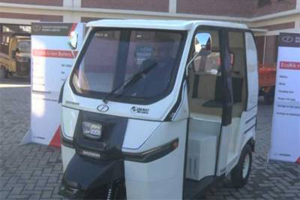
Wrangling persists over electric vehicle policy
An electric vehicle policy came up for discussion on April 6 - Monday, and persistent differences in views between commerce ministry and climate change ministry continued to mar the smooth passage of the policy. The meeting decided that the focus of electric vehicles in Pakistan should be initiated with two wheelers (motorcycles) and three wheelers (auto rickshaws), which would satisfy the concerns of both the ministries. “Shifting to e-motorcycles was easier as it has been witnessed in middle class markets like China,” said an official of the ministry of climate change, who participated in the meeting, adding, “Besides, Pakistan has a very large number of motorcycles, motorcycle rickshaws and auto rickshaws that emitted a significantly huge amount of smoke.” The issue of electric four wheelers (cars) would be taken up at a later stage; however the ministry of climate change stressed one per cent duties on imports of parts for assembly of e-motorcycles and e-auto rickshaws. The officials of the ministry of industries maintained that Pakistan has a strong production base and almost all parts of two wheelers and three wheelers are manufactured locally, so the existing makers should encouraged to shift from oil to battery-based vehicles. The meeting witnessed diversified views mainly among the initial paperwork between the ministry of climate change and the ministry of industries. The meeting agreed that a fair and transparent policy is essential for consumers and investors. It noted that electric vehicle policy was the need of the hour, particularly because of its impact on environment, but its success would depend on promoting local production and assembly, while ensuring safety standards. The meeting agreed that the existing auto sector policy will be allowed to function to maintain the government’s continuity of policies and to build the confidence of investors.
|
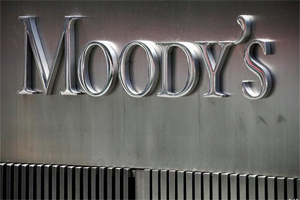
Moody’s cuts Pakistan’s growth forecast to 2-2.5%
Moody’s Investors Service has said that Pakistan’s economy continues to grow unlike the likely recession in several other economies amid the global health crisis but has revised down its growth projection to 2-2.5% for the current fiscal year ending June 30, 2020. The global credit rating agency had foreseen the country’s gross domestic product (GDP) growth at 2.9% before the corona virus pandemic hit people, businesses and economic activities in Pakistan early last month. Besides, it found the country’s central bank measures to protect people, businesses and the economy supportive towards the banking system. Moody’s said the downward revision in GDP growth “reflected the impact of the corona virus pandemic”. Talking to a private TV channel the other day, former finance minister Dr Hafiz Pasha hinted at a recession in Pakistan in the “extreme situation” if the health crisis worsened and took a toll on people’s lives and jobs. The textile sector, the country’s key manufacturing sector which accounted for around 60% of export earnings, had also been hit by supply-chain disruptions and a decline or postponement of export orders, it said .
|
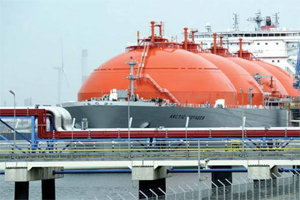
Govt moves to take over second LNG terminal’s assets
As the Pakistan GasPort Consortium Limited (PGPC) has moved the London Court of International Arbitration challenging the termination of Operations and Services Agreement (OSA) by the government, the Petroleum Division on Thursday submitted a plan before the Cabinet Committee on Energy (CCoE) to take over its assets. The PGPC – the country’s second LNG terminal – has referred the disputes to be finally resolved through arbitration at the London Court of International Arbitration. Proceedings have been initiated and are currently pending for want of the Pakistan LNG Terminals Limited’s (PLTL) response. In order to secure the LNG supply chain, the Petroleum Division claims that OSA provides the PLTL the right upon expiry or earlier termination of OSA, purchase, lease of the services infrastructure. Under one option, the CCoE was informed that the PLTL may purchase the jetty from the PGPCL. Other options are lease of floating storage and regasification unit from the BW Group, connecting pipeline and their jetty from Fauji Oil Terminal and novation of implementation agreement from the Port Qasim Authority (PQA). Under the second option, the Petroleum Division proposed that as an alternative to taking over the operations of the second LNG terminal by PLTL, OSA also provides for appointing a substitute operator through a transparent and competitive bidding process. This option ensures that original mandate is preserved and public-private partnership is promoted and continued. Ernst and Young was engaged by the PLTL for financial due diligence and subsequent project financing for acquisition of assets of Terminal-2. Total funding required for the project is Rs13.5 billion. The project will be financed through a mix of 65.35 debt and equity ratio which will require an equity injection of Rs4 billion whereas Rs8.8 billion would be raised from commercial banks. According to the PLTL, from the financial due diligence of the consultant, a project is commercially found viable with IRR 26 per cent with manageable risk and payback period. The PLTL had further informed that there was potential of passing on benefit to the public because of levelised tariff of 38.67 cents per mmbtu. However, the PLTL said that the PGPC attempted in utmost good faith to amicably resolve the dispute. The PGPC offered concessions beyond its contractual obligations, however, unfortunately, the parties could not settle the disputes.
|

Coronavirus forecast to render 18.5m jobless in Pakistan
The Ministry of Planning has estimated that 12.3 million to 18.5 million people in the country will lose their jobs and the economy will sustain Rs2 trillion to Rs2.5 trillion losses in just three months due to “moderate to severe shocks from the corona virus outbreak”. The ministry in an inter-ministerial meeting discussed the preliminary estimates, which are based on information received from various government entities and initial research conducted by the Pakistan Institute of Development Economics. The assessment is based on limited, moderate and complete lockdown. The country seems to have already passed the limited level and is at the moderate phase in terms of restrictions on movement and is inching towards complete restrictions. The ministry has assessed losses at Rs1.2 trillion in limited lockdown scenario, Rs1.96 trillion in moderate and Rs2.5 trillion in case of complete restrictions on movement, which symbolizes a curfew-like situation.
Job losses
Initial estimates show that in case of limited restrictions, about 1.4 million jobs will be lost. In a moderate scenario where private offices and most shops are closed, but essential shops are open, the government has worked out 12.3 million people becoming jobless. In case of a complete shutdown, the government has assessed that 18.53 million people or 30% of the labour force will be unemployed. These people will sustain Rs783 billion losses.
Business, revenue losses
Business loss amount at over Rs450 billion for the fourth quarter, has been estimated
Trade losses
The government also expects a sharp slowdown in trade activities.
On the trade side, there is an expected sharp slowdown in imports from 35% up to 60%, depending upon the severity of the crisis. Exports could potentially go down by up to 10% in dollar terms in the fourth quarter.
|
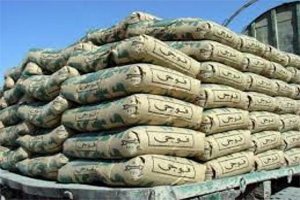
Domestic cement sales fall 16.7% in March
In line with expectations, the spread of corona virus in Pakistan took its toll on domestic cement consumption, which declined 16.7% in March, while exports grew at a sluggish pace of 5.27% as global markets were also bearing the brunt of the virus. According to data released by the All Pakistan Cement Manufacturers Association (Apcma), the cement sector sold 3.72 million tons in March 2020, which was 14.26% lower than sales of 4.34 million tons in the corresponding month of previous year. On the domestic front, cement off take dipped to less than 3.2 million tons compared to 3.85 million tons in March 2019. Exports, however, inched up slightly from 0.48 million tons in March 2019 to 0.51 million tons in March 2020. The increase in cement exports came despite the loss of Indian market. Exports to India have dropped to zero during the current fiscal year while in the first nine months of previous year, Pakistan had exported 0.72 million tons of cement to Delhi. Cement mills based in the north sold 2.75 million tons locally in March 2020, which was almost 10.5% lower than sales of 3.02 million tons in the same month of last year. In line with the current trend, exports from north-based mills also decreased 18.85% to 0.11 million tons in March from 0.13 million tons in March 2019.The southern region of the country reported a substantial decline of 40.96% in domestic sales as they dipped from 0.79 million tons in March 2019 to 0.46 million tons in March 2020. Exports, on the other hand, registered a rise of 14.32% to 0.4 million tons last month as opposed to 0.35 million tons in March 2019. Experts in the cement industry have said that in the wake of the lockdown extended till April 14, economic activities would remain subdued. Domestic consumption during the period amounted to a little over 30 million tons while exports amounted to 6.5 million tons. The domestic cement off take increased 3.82% during the period while exports registered a considerable rise of 25.63%.
|
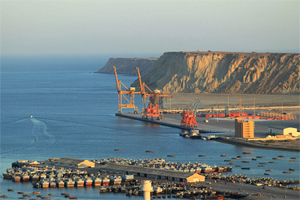
Gwadar port stays largely unaffected by global pandemic
Despite the prevailing COVID-19 pandemic, the Gwadar Port which is a major project under the China-Pakistan Economic Corridor (CPEC) is functioning well. The comment came in response to a Global Times report which presumed Chinese teams are unable to return to their posts amid the pandemic that has stalled many Belt and Road Initiative (BRI) projects. It is pertinent to mention that a large number of projects under the BRI employ a limited number of Chinese staff and rely on local employees for most roles. “The port is functioning well. Chinese workers have returned to their posts, after completing their 14-day self-imposed quarantine,” a source close to the senior management at the port told the Global Times. “The port’s operations have not halted. That’s the nature of our business. We take turns to take some holidays.” The source further said that while there is no negative impact on the port’s operations, it cannot remain unaffected by the impact the corona virus has had on global shipping. “Many ships swing by Gwadar after visiting a number of other ports first and with global shipping being disrupted by the pandemic, there has been quite some re-routing which has affected the port,” the source said. In a recent interview with the aforesaid foreign media outlet, Foreign Minister Shah Mahmood Qureshi said CPEC construction won’t be impacted in the long run, although it could face a slowdown in the short run. “As soon as we are over the hump of dealing with the corona virus, I think we’ll be back on track,” Qureshi said. “After the temporary dip, things will grow back quickly and the entire region stands to benefit from the projects.”
|

Builders ready to initiate new projects worth Rs1tr
Pakistan is set to see exponential growth in housing and construction industry, as builders and developers are poised to initiate around 1,000 new projects worth over Rs1 trillion over the nine-months ending December 2020. Last week, Prime Minister Imran Khan announced an industry specific historical relief package cum amnesty scheme – subsidy and tax holidays for investors and purchasers – aimed at creating employment opportunities for daily wage earners and turning around the corona virus pandemic hit domestic economy. “The housing and construction industry would not only attract local investment, but also huge foreign investment under the historical package,” Association of Builders and Developers of Pakistan (Abad) former chairman Hasan Bakshi said while talking to media. The construction activities are expected to kick-start after Eidul Fitr (falling late in May) and pick up momentum after monsoon rains (June-July).
|

Car sales fall 47% during July-March
The situation deteriorated further for the already struggling automobile sector as car sales fell 47% in the first nine months of the current fiscal year amid a nationwide lockdown in the wake of COVID-19. According to data released by the Pakistan Automotive Manufacturers Association (PAMA), sales of automobiles clocked in at 97,664 units during July-March FY20 compared to 185,023 units in the same period of the previous fiscal year. “The abysmally low sales because of COVID-19 outbreak have added to the sector’s already weak sales, resulting in overall auto sales registering a decline of 47% year-on-year in 9MFY20”. March saw lowest monthly car sales after December 2008 amid enforcement of lockdown by provincial governments to limit the spread of corona virus, which also resulted in closure of plants. The outlook remained gloomy for all three major market players as they posted significant decline in sales during the period under review.
|
|

© 2020 Alpine Marine Services Private Limited
all rights reserved
|
|
|